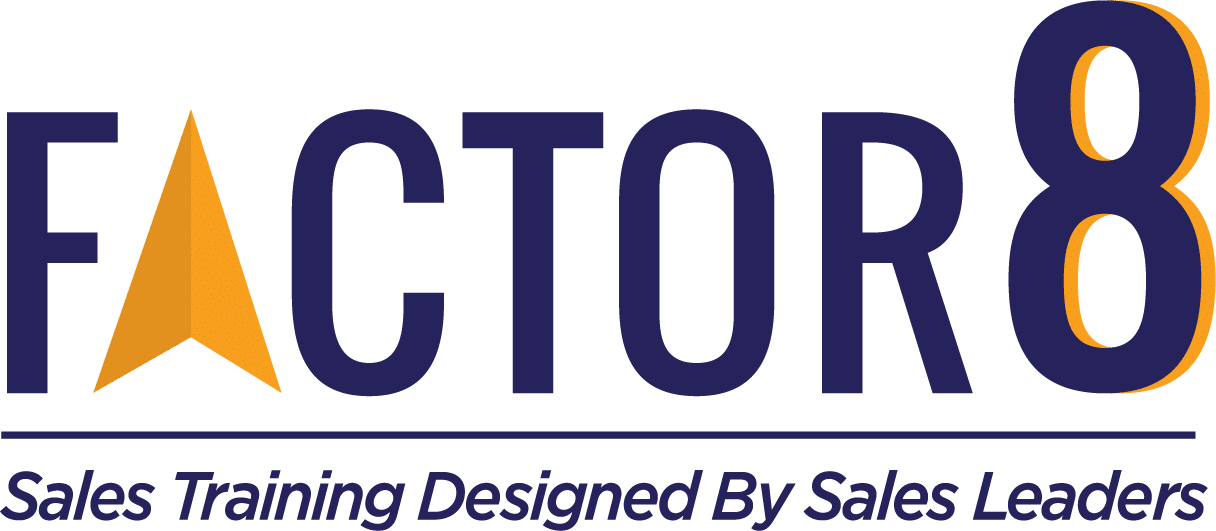Why Sales Training Videos Don’t Work
Calling All Leaders Training Sellers!
There’s something wild happening in the sales training industry right under our noses, and it’s severely impacting the skill level of your front-line sellers. Truth: Sometimes I’m part of the problem.
Riddle me this, my friends:
If it takes 8 meaningful interactions for a buyer to take action (Salesforce) or 900 digital touches before a major purchase decision (Google), then…
Why do we expect sales reps to try a new skill after watching one video?
Video learning is as passive as it gets (not that anyone ever checked email while playing a training video) and yet we’re “training” sellers with this single touch (not even eight touches like SFDC says we need. Video alone should take hundreds, right?)
Getting a seller to try a new skill = getting a buyer to make a purchase.
And a 30-minute training video = a single commercial.
In other words, sales training videos alone don’t work – they’re not effective in teaching skills. In fact, I’m going to climb up a little higher on my soapbox and say…
Video-based sales training is NOT ACTUALLY TRAINING.
It’s entertainment. “Edu-tainment” at best. In our marketing vs. sales analogy, training videos would be the equivalent of content marketing. Its purpose is to brand, to “passive touch”, and to warm a prospect.
READ: 10 Signs Your Sales Team Needs Sales Training
Unfortunately, not a lot of leads convert from content alone. Especially from a single blog or ad. This is where marketers share the stat that it takes eight “meaningful interactions” before someone will take action. And sales leaders get that “meaningful interactions” are best driven by the sales team – things like asking the right questions, qualifying, customizing the pitch, applying the solution to their world, showing value, etc.
Training works the same way. What we’re selling is a behavior change – the breaking of one habit and the installation of another. Let’s say the goal is to stop sellers from prematurely pitching as an example. We want to replace the habit with a new one like asking prospects 5 questions before delivering a custom pitch.
A great webinar or video on the subject will at best introduce this concept or maybe passively gain some attention or buy-in to the idea. Great first step!
READ: What Makes Good Inside Sales Training?
But as leaders, it is irresponsible of us to leave it there. We left off the entire rest of the learning cycle! If your training is only (or primarily) video-based, then your learners are missing:
- If and how the idea applies to them
- When in the sales cycle it’s happening
- Which behaviors they do today that they need to stop
- How to write better questions
- When to ask new questions
- What to do when they get the answer
- How to ask the questions confidently
- How to bring up the pitch
- When to bring up the pitch
- Practice and support doing this over and over until it’s a habit
The most important parts of training to gain behavior change are missing. Don’t even get me started on maintaining that behavior (heard of the forgetting curve?)
Here’s the hard truth: If your training does not include an opportunity to try the skill, customize the application of the skill, share examples of the skill being done in different situations, practice using the skill, or feedback on the execution of the practice, then I’m sorry to tell you that you’re not training. You’re entertaining.
READ: How to Level Up Your Team with Sales Training
It’s gotten harder to influence buyers to take action with all the “noise” out there, right? Your sales teams are right in the middle of all that noise, and the younger generation is accepting video training as complete. It’s up to us to do it better. It will be a competitive differentiator for those who do.
Please do yourself, your managers, and your salesforce the favor of checking. Here are some questions to ask your training/new hire/enablement team:
- What percent of our new hire (or ongoing/career path) training lessons are video-based?
- What do we do after the video?
- When do they customize and practice the skill?
- Who gives feedback on the execution of the skill?
- What actions are being done to keep it alive?
Sales enablement leaders and trainers, I know you feel me. You’ve been preaching this for years, and you could chart out where video lands on Bloom’s taxonomy and how much real estate is between a video and the confident application of the skill. Need some buy-in? Send this blog, and then go ask your sales leaders these five questions:
- What are you doing to teach new hires basic selling skills?
- How much of their training is video or webinar/zoom-based (aka a “talking head”?)
- What percent of their time in training is spent listening to live calls or practicing the skill?
- What tools do the managers use to reinforce the training?
- Have you taught managers how to coach and reinforce the skills?
READ: How to Find the Best Inside Sales Training Company
Let’s all do this better. There are too many young salespeople failing out of sales. Very few get to sit next to a rockstar to soak in how it’s done. It’s up to the sales and enablement leaders to demand better skills training! I’d LOVE to share how we built 10-15 interactive touches into our training at Factor 8. If you have teams of front-line digital sellers or managers, please let us show you our methodology and our results.
Want more information on why sales training videos don’t work?
Contact us today to request information on our customizable virtual sales training programs
available for reps (and managers).

